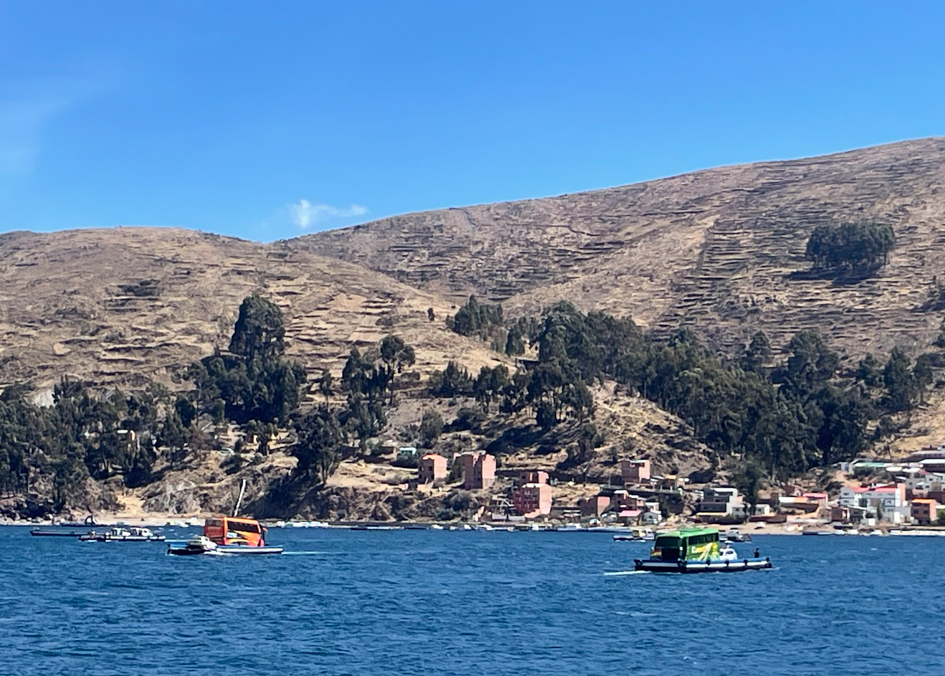When I arrived the night before last, I couldn’t see the way to our little island because it was dark. This morning in daylight, as we were one of the last islands, we drove past all the others, there are 110 floating islands of Puno in total. What I could see made me think more of Disneyland. One playful supposed tourist attraction followed the next. The situation of the floating islands in Puno is highly questionable, in my opinion.
The Uros actually lived far away, but because of and for the tourists, they moved close to the city to showcase their traditions.
In Puno, I then transferred from the boat to the bus, and after a very stressful transfer, I now spend the whole morning traveling along Lake Titicaca. There are many beaches, but no people sunbathing there. The water has an average temperature of around 10° and the outside temperature is not much higher, even in summer. So there is no beach vacation at 3800 meters.
There are repeated landslides. The bus has to drive slowly over areas covered in rubble. When I think of the numerous landslides from the mountains that you see as you drive past, I wonder what the mountains are made of. It seems to be very soft and small-grained material when it slips away relatively easily in heavy rain. Roberto, my companion from Cusco, said that people from his neighborhood were very afraid of a mudslide. If I remember correctly, it happened in his neighborhood once before, with devastating consequences. If any of the readers can help with knowledge, I look forward to any comments. Just write an addition below.
.


Then finally Copacabana, Bolivia, not Brazil. This small town is beautifully situated on Lake Titicaca, is a resort and also a transfer point for many bus travelers, like me, where I had to change buses: the Peruvian for the Bolivian.
From Copacabana, a serpentine road wound its way up to the other side, where we had to take a boat across Lake Titicaca. People separated from the bus, the bus on a raft. It felt like the raft was a meter wider all round than the bus. It was motorized on the water, but on land it had to be brought into the right position with strong forces. At the end of the raft trip, our bus had to make three attempts to get the raft into the right position so that the bus could drive off the raft. An incredible feat. As tourists, we wondered whether this would remain a tourist highlight and why no bridge would be built. You could ask yourself whether bridges are perhaps a little overrated anyway. If the situation with Cologne’s bridges continues to develop as it has in recent years, we may soon be able to cross the Rhine on rafts ….


The Altiplano, the high plateau at around 3800 meters, looks a little boring overall. Flat, wide, overgrown with grass, a few cows and sheep here and there, only higher mountains at the end. Actually quite as boring as the flat landscape we are familiar with in northern Germany ( 🤣complaints welcome! ).
And then …. La Paz … crazy …. More of that tomorrow ….
.



Comments